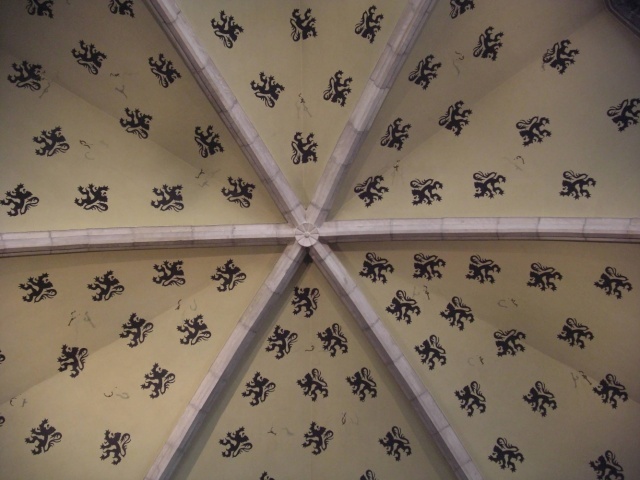When Dr. Wolbrink mentioned today how detailed and thorough the code of chivalry could be to a knight's conduct, I think that we may have been underselling just how
intense being a chivalric knight could be, and how thought-out its doctrines were. When we talk about chivalry, we tend to talk about vague notions of "honor," "courage," "fidelity," etc., with a few mentions of specific rules, but beyond that the discussion tends to end.

Here we bring in
The Book of Chivalry by Geoffroi de Charny, a French knight living in the 1300s who was well-known as the "quintessential knight of the age" (3). This book, essentially written for the sake of young knights to be a sort of guide through the expectations and rituals of the chivalric life, is by far one of the best documented sources we have when it comes to the specifics of the tradition of chivalry (35).
For instance, he talks about the distinction between the glory of those who distinguish their "prowess" in tournaments, small-scale political wars, and those who distinguish their prowess in large-scale wars (such as the 100 Years War between France and England), with "deeds of arms in war" being "the most honorable" (85-90). However, true to what Dr. Wolbrink mentioned, we start to see the idea by this point that knights become a quasi-religious order in his mentioning that while prowess in battle is glorious, the
highest glory for a knight is to "undertake distant journeys and pilgrimages" to the holy sites of the Christian faith (91).
However, chivalry is not only about combat, for he also gives "advice on conduct toward friends and enemies," who must be treated with humility in the case of the former, and proudness and boldness in the case of the latter (129). There is lots of very specific advice here, ranging from "Do not put too much faith in people who have risen rapidly above others by good fortune" to "Refrain from remonstrating with fools, for you will be wasting your time, and they will hate you for it" (131).
These are just a few examples of this incredibly detailed text on how chivalry was presented ideally in the 1300s, but they illustrate sufficiently the kind of knight Geoffroi de Charny wanted more of in his world: kind, noble, wise, pious, and of much prowess.
Geoffroi de Charney. The Book of Chivalry. Translated by Richard W. Kaeuper and Elspeth Kennedy. Philadelphia: University of Pennsylvania Press, 1996.















